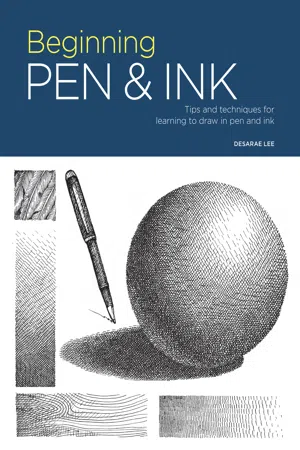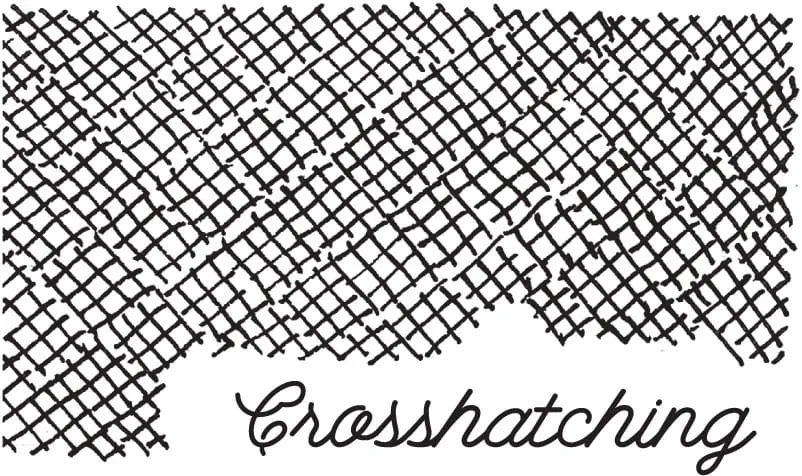
- 128 pages
- English
- ePUB (mobile friendly)
- Available on iOS & Android
About This Book
Portfolio: Beginning Pen & Ink will teach you everything you need to know about the fundamentals of drawing with pen and ink. From the beloved and best-selling Portfolio art series by Walter Foster Publishing comes Portfolio: Beginning Pen & Ink, a book that invites you to explore this classic art medium in new and refreshing ways. This comprehensive guide is packed with valuable resources for artists of all skill levels, starting with the basics and ending with intricate, original step-by-step projects that are sure to impress—and inspire. Portfolio: Beginning Pen & Ink introduces drawing basics, including stippling, hatching, and crosshatching; how to master the fundamentals of mark-making and line work; and helpful exercises for contour drawing, gesture drawing, perspective, and more. Chapters on value, tone, mood, light and shadow, and texture follow, ensuring that artists gain the drawing knowledge they need before working on the step-by-step projects featured in the book. Artists can even learn to add color to their black-and-white art using watercolor for a fresh, modern take on an age-old art form. Whether you're a new artist looking to try a celebrated art technique, a pen-and-ink enthusiast, a mixed-media master, or a graphite-pencil fan looking to branch out to new mediums, Portfolio: Beginning Pen & Ink will teach you everything you need to know. The Portfolio series covers essential art techniques, core concepts, and media with an approach and format that's perfect for aspiring, beginning, and intermediate artists. Also available from the series: Beginning Acrylic, Beginning Drawing, Beginning Watercolor, Beginning Pastel, Beginning Colored Pencil, Beginning Color Mixing, Expressive Painting, Beginning Color Mixing, and Beginning Composition.
Frequently asked questions
Information
BASIC
Techniques

Line Work
STRAIGHT LINES

CURVED LINES


THICK VS. THIN LINES

ADD VARIETY

HATCHED LINES


IMPLIED LINES

CONTOUR LINE


Exercise: Contour Drawing
Table of contents
- Cover
- Title Page
- Contents
- Introduction
- Getting Started
- Basic Techniques
- Mastering What you've Learned
- What's Next?
- About the Artist
- Copyright